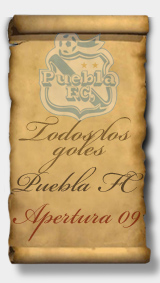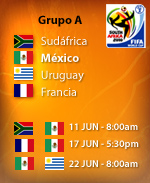|
|
|||
| Puebla de Zaragoza: 27 de Marzo de 2010 | |||
 |
|||
 |
||||||||||||||||||||
|
Professional Soccer Timing: Stoppage, Extra Time, ShootoutsWhen you watch a professional soccer match, timing isn't as simple as the clock hitting 90 minutes. Referees add stoppage time for interruptions, and if scores stay level, the match pushes into tense extra periods and sometimes shootouts. These rules don't just shape how the game unfolds—they influence every strategy and emotion on the field. Before you can really appreciate the drama behind the final whistle, it's important to see why every minute matters. Standard Match Length and StructureA standard professional soccer match consists of 90 minutes, divided into two halves of 45 minutes each, with a 15-minute halftime break. This structure is commonly observed in various leagues and tournaments. In knockout-style tournaments, if teams are tied after the regulation time, they proceed to extra time, which comprises two additional halves of 15 minutes each. Should the score remain level after extra time, a penalty shootout ensues. During the shootout, each team alternates five penalty kicks to determine the winner. This format is designed to consistently produce a result, thus ensuring that a victor is established in each match, which is significant in competitive play. The Role and Calculation of Stoppage TimeIn soccer, the concept of stoppage time is critical to understanding match duration. While the official match clock typically displays 45 minutes for each half, the game doesn't conclude until the referee signals the end of stoppage time. This added time accounts for interruptions during the match, including injuries, substitutions, and goal celebrations. Stoppage time can vary considerably, often ranging from one minute to several minutes, depending on the events that occurred during the half. Recent tournaments, such as the 2022 World Cup, have shown an increase in average stoppage time, frequently extending to 7 to 9 minutes per half. In some instances, stoppage time can be substantial; for example, a notable record was set during a Carabao Cup match, where 28 minutes of stoppage time were added. This emphasizes the importance of the entire duration of the match, including stoppage time, as it creates opportunities for late goals or changes in the match's outcome. Therefore, it's essential for players, coaches, and fans to recognize that a match isn't over until the referee has concluded both the regular time and any stoppage time. What Happens in Extra TimeIf a knockout-stage soccer match concludes in a tie following regulation and stoppage time, the game proceeds to extra time. This period consists of two 15-minute halves, without the implementation of sudden death rules; both halves are fully played regardless of whether goals are scored during that time. As in the regulation period, referees have the discretion to add stoppage time to each half to account for interruptions such as injuries or substitutions. The extra time phase can lead to significant developments, as evidenced by notable matches in tournament history. Should the score remain tied after the completion of extra time, the match is resolved through a penalty shootout to determine the winner. Penalty Shootout ProceduresIn knockout matches where teams can't be separated after regulation and extra time, the outcome is determined through a penalty shootout. Each team selects five players to take alternating penalty kicks, starting with the team determined by a coin toss. If the score remains tied after these initial five kicks, the shootout transitions to a sudden death format. During sudden death, teams continue to alternate shots until one team scores and the other does not. It's noteworthy that no additional time is added for these attempts, which can create significant pressure for both players and coaches. Typically, coaches prioritize players with a demonstrated proficiency in penalty kicks when making their selections. An example of a skilled penalty taker is Lewis Morgan. It's important to acknowledge that while the average shootout consists of ten attempts, in certain circumstances, it can extend to multiple rounds, leading to a lengthy series of kicks that tests the resolve and accuracy of the players involved. The procedural structure of penalty shootouts is designed to ensure a clear and decisive outcome in critical match situations. Unique Game Timing ScenariosWhile soccer matches typically adhere to a structured timing system, there are notable exceptions that can alter the progression and outcome of the game. Stoppage time, for example, isn't fixed and can vary between matches, with instances of added time reaching up to 7–9 minutes in high-stakes situations or even longer, as seen in rare cases with 28 minutes added. In knockout tournaments, if the score is tied at the end of regulation time, the match proceeds to 30 minutes of extra time, divided into two halves. This extra period can also be subject to stoppage time, accommodating any interruptions that may occur. If the match remains unresolved after extra time, teams advance to a penalty shootout, where the outcome hinges on the success of individual penalty kicks. These variations in timing can profoundly influence team strategy and game dynamics, often leading to critical moments that determine the eventual winner. The management of stoppage time, extra periods, and penalties is a fundamental aspect of soccer, reflecting both the unpredictability of the sport and the importance of these scenarios in competitive play. Impact of Timing Rules on Strategy and Spectator ExperienceTiming rules have a significant influence on match dynamics, compelling teams and coaches to continuously adjust their strategies, particularly during stoppage time, which can be unpredictable. Managers often modify their tactical approach—either defensively or offensively—based on the urgency created by these additional minutes of play. In tournament-style matches, the introduction of extra time necessitates careful management of player rotation and energy levels to avoid exhaustion, especially in the lead-up to potential penalty shootouts. From a spectator's perspective, stoppage time can heighten the sense of importance surrounding each moment of the match. Extended added periods and potential shootouts can contribute to the overall drama of the event, fostering a deeper emotional connection to the outcome. This indicates that timing rules not only affect team strategies but also significantly shape the viewing experience for fans, as the intensity of these moments can impact engagement levels until the match concludes. ConclusionAs you watch or play professional soccer, you’ll notice timing rules do more than just keep the clock running—they shape the game’s tension and strategies. From stoppage time to dramatic penalty shootouts, every second counts, whether you’re on the field or in the stands. Understanding these timing elements helps you appreciate the sport’s unpredictable twists and high-stakes moments. Next time you follow a match, you’ll spot how timing keeps everyone on the edge of their seat. |
|
||||||||||||||||||
|
||||||||||||||||||||








